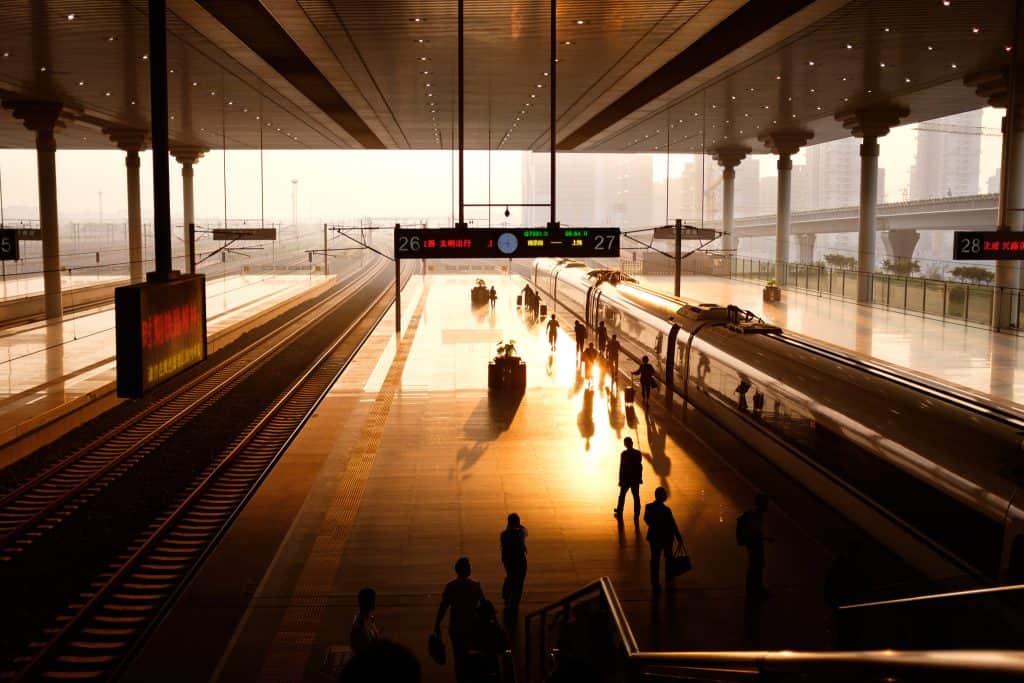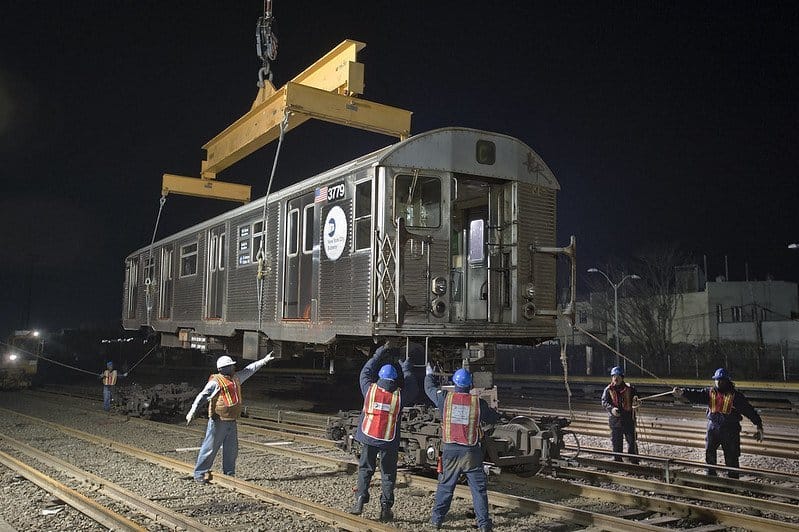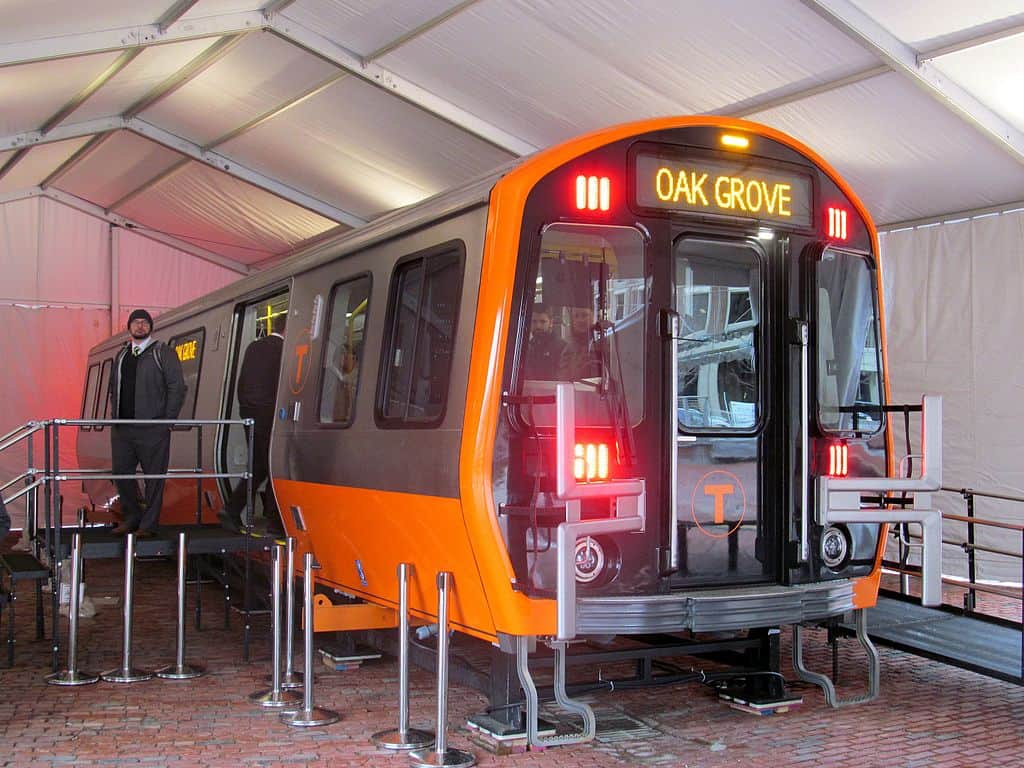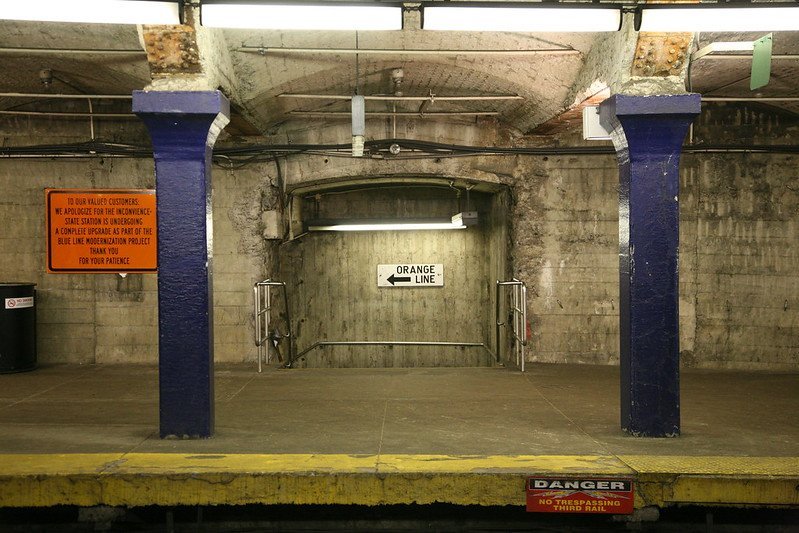Three billion trips by Chinese revelers are underway for Lunar New Year, more than 20 times the number that take place during America’s holiday rush. Many will be taken by train, China’s primary mode of intercity transit. Over the last couple of decades, China has become the most prolific builder of rail on earth. It constructed the world’s largest high-speed rail system and its two longest subways. China also manufactures trains — so many that it is beginning to sell them around the globe.
Could China sell its trains in the U.S., too? It sounds like a nonstarter given trade tensions and bad blood, but in fact, Chinese companies are already working with U.S. transit agencies to upgrade their aging fleets of subway and commuter trains. They’re offering these trains at deep discounts, something companies breaking into a new market often do. And America’s chronically cash-strapped transit agencies are taking advantage of the deals.

That America’s railway infrastructure could use the upgrades is beyond dispute. Since 2007, public spending on U.S. transport projects has fallen by nearly $4.2 billion. As such, transit agencies are making do with decades-old rail cars, many of which are well beyond their intended lifespans. Making things worse, only a small number of companies manufacture rail cars, and none of them are in the U.S. With meager funds and few companies to choose from, affording new trains has become a significant problem for American cities. It’s a problem Chinese companies are eager to solve.
Service alert
The rail systems of many U.S. cities and states suffer from a lot of issues: outdated signal technology, deferred maintenance, inadequate capacity. But there’s one that you’d think would be solvable with an order form and the stroke of a pen: obsolete rolling stock. Or, to put it simply, old trains.
On New York’s subway system, the nation’s largest, one can still find R32s. These train cars were purchased over 50 years ago, when Lyndon Johnson was president and landing on the moon was still a hypothetical. Today, they’re among the oldest subway cars still operating in the world.

New York has been trying to replace them, but it isn’t easy. In 2012, the city’s Metropolitan Transit Authority (MTA) ordered 300 new subway cars from Bombardier, a Canadian company. The cost of the order was north of $600 million. But in the world of train car procurement, even $600 million doesn’t guarantee on-time delivery — Bombardier was over two years late getting its rail cars to New York. When they finally arrived, a series of glitches caused the doors to open while the trains were in motion. They were taken out of service, and now the MTA is considering legal action.
Late delivery and faulty rolling stock isn’t a problem that’s unique to Bombardier. Transit authorities from Boston to San Francisco have struggled to get their new trains delivered on schedule. One reason for this is that there simply aren’t a lot of manufacturers to choose from — you can count on two hands the number of major train makers in the world. This leaves transit agencies little choice but to place orders with companies that have proven unreliable in the past.
This makes China’s arrival to the global rail car market a game-changer. Its major train maker CRRC is the world’s second-largest industrial company after GE. It’s the recipient of over 40 percent of global rail revenues. Its production capacity is so high that, last decade, it started looking abroad for other countries in which to sell its trains. So far, CRRC has sold freight trains to Australia, electric trains to Argentina and driverless trains to Hong Kong. In 2014, it won a bid to sell subway cars to the Massachusetts Bay Transit Authority.
Boston’s “Made in China” subway
When it signed its deal with CRRC, the MBTA became the first American transit agency to place an order for a fleet of train cars from a Chinese company. Other U.S. cities are watching Boston’s experience closely, a fact that China is surely aware of.
In 2013, the MBTA put out a call for bids to build 284 train cars for Boston’s subway, which locals call the “T.” Rail car manufacturer China CNR (which would later become CRRC through a merger) threw its hat into the ring with a bid was over $150 million lower than its closest competitor.

To ensure that it wouldn’t be seduced into buying a cut-rate, substandard product, the MBTA was careful to evaluate the bids on their technical merits before even looking at their price tags. On these metrics — quality assurance, past performance, manufacturing — the Chinese company scored at least as high as its rivals, which included well-established train builders like Canada’s Bombardier and Japan’s Kawasaki.
To further lock in a positive outcome, the MBTA’s contract with CRRC contained “provisions designed to mitigate risk” due to the fact that this would be the Chinese company’s “first experience” in the American market. These provisions included extra money set aside as a “performance guarantee,” and closer than usual collaboration between the Chinese workers and the MBTA.
The contract also mandated that the train cars be assembled in Massachusetts, so CRRC built a $95 million assembly plant in Springfield, a hard-scrabble city in the state’s post-industrial western flank. Now, at the CRRC factory, 122 local union workers assemble the train cars from parts shipped in from China. The first cars started rolling off the line in April last year, and went into service in August. In March, the Massachusetts chapter of American Council of Engineering Companies declared the plant the state’s engineering accomplishment of the year.
Too good to pass up
China has been accused of exploiting other countries when cutting infrastructure deals with them. But in this case, if anything, Massachusetts got a bargain: a fleet of subway cars far cheaper than what is usually available, and a chance to make the commutes of thousands of riders more pleasant and reliable. Observers both inside and outside the MBTA say the process has unfolded relatively smoothly, with only the kind of minor glitches that are common in large deliveries of rolling stock. The agency was impressed enough to quickly order an additional 120 rail cars from CRRC. “We want them to do ours, and we don’t want them to do someone else’s,” said the state’s transportation secretary.

CRRC is able to sell its trains at such a low price because of subsidies it receives from the government, a practice that has helped many a Chinese company grow quickly. It’s also a practice that’s often criticized by the international business community: governmental support of Chinese companies gives them an unfair advantage in the global market. The question is: Is it the responsibility of cash-strapped local transit agencies to turn away Chinese companies because of this? Should Boston commuters resign themselves to disco-era subway cars in protest of Beijing’s trade practices?
Massachusetts transportation officials would presumably argue that ensuring China complies with international trade law is the job of the World Trade Organization, not the MBTA. The MBTA’s job is to provide high-quality transit service for its riders. In other words, China’s trade practices are a problem, but they’re not the MBTA’s problem. The MBTA’s problem is ancient trains, and China is solving it.
According to a recent analysis by the Eno Center for Transportation (no relation), China’s cheap trains have “been a boon” to U.S. transit systems, “both in terms of significant cost savings to agencies and governments, as well as the construction of domestic assembly plants,” which employ hundreds of American workers to assemble the Chinese rail cars.
The Eno report also notes that China’s price-slashing methods, while extreme, aren’t unusual. “Companies regularly underbid to gain access to a market and win projects, and taxpayers benefit from the subsidies from foreign governments or venture capital,” it states.
This hasn’t stopped certain local politicians from crying foul. Some claim China’s train cars could be a Trojan horse containing cyberwarfare technology. And some of CRRC’s major purchase orders, including a $1.3 billion order for a fleet of rail cars for Chicago, have been imperiled by the Trump administration’s tariffs.
All of which is to say, these deals won’t last. Even if politics doesn’t get in the way, CRRC won’t have to offer its product at bargain-basement prices forever. It’s already the largest rail car manufacturer in the world, with annual revenues twice as high as its biggest international competitor. It may someday dominate the industry, in fact — a real concern for other rail car manufacturers.
But the U.S. doesn’t have to worry about this. China isn’t competing against American rail car manufacturers, because America has no such manufacturers to compete against. For now, U.S. transit agencies have the option to take advantage of China’s discount prices, and its offers to create jobs for American workers at assembly plants built with Chinese money.
Since the first deal it cut with Boston, CRRC has signed contracts with Philadelphia, Chicago and Los Angeles. After the Chicago contract was signed, Bombardier complained that its bid had actually been rated higher than CRRC’s. The Canadian company argued that therefore it should have won the contract, even though the price of its rail cars is far higher than the price of China’s product. To this, the Chicago Transit Authority responded that transit funding isn’t infinite. Every dollar spent on one project is one less dollar for another, which, the agency said, is why “the proposed Bombardier cars are not worth an additional $239.1 million.”
This disconnect exemplifies how, when it comes to transit, procurement is complex. But it appears that some U.S. cities have decided that the chance to benefit from China’s rise is too good to pass up.
Interested in how the U.S. can collaborate with China? Read David Byrne’s article “Is It Okay to Copy China?”
Will Doig is the author of High Speed Empire: Chinese Expansion and the Future of Southeast Asia






